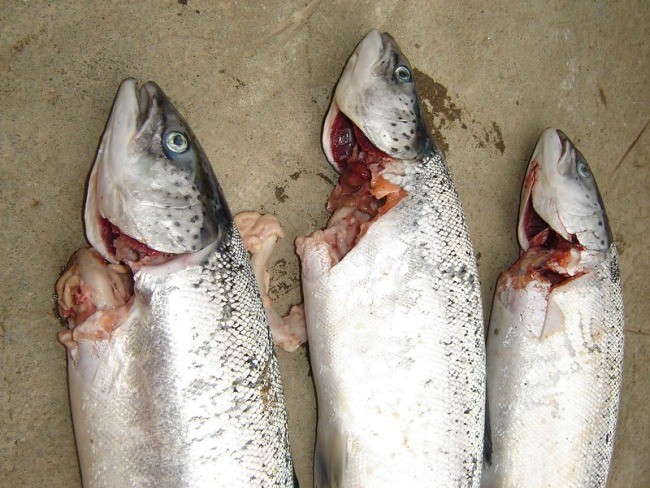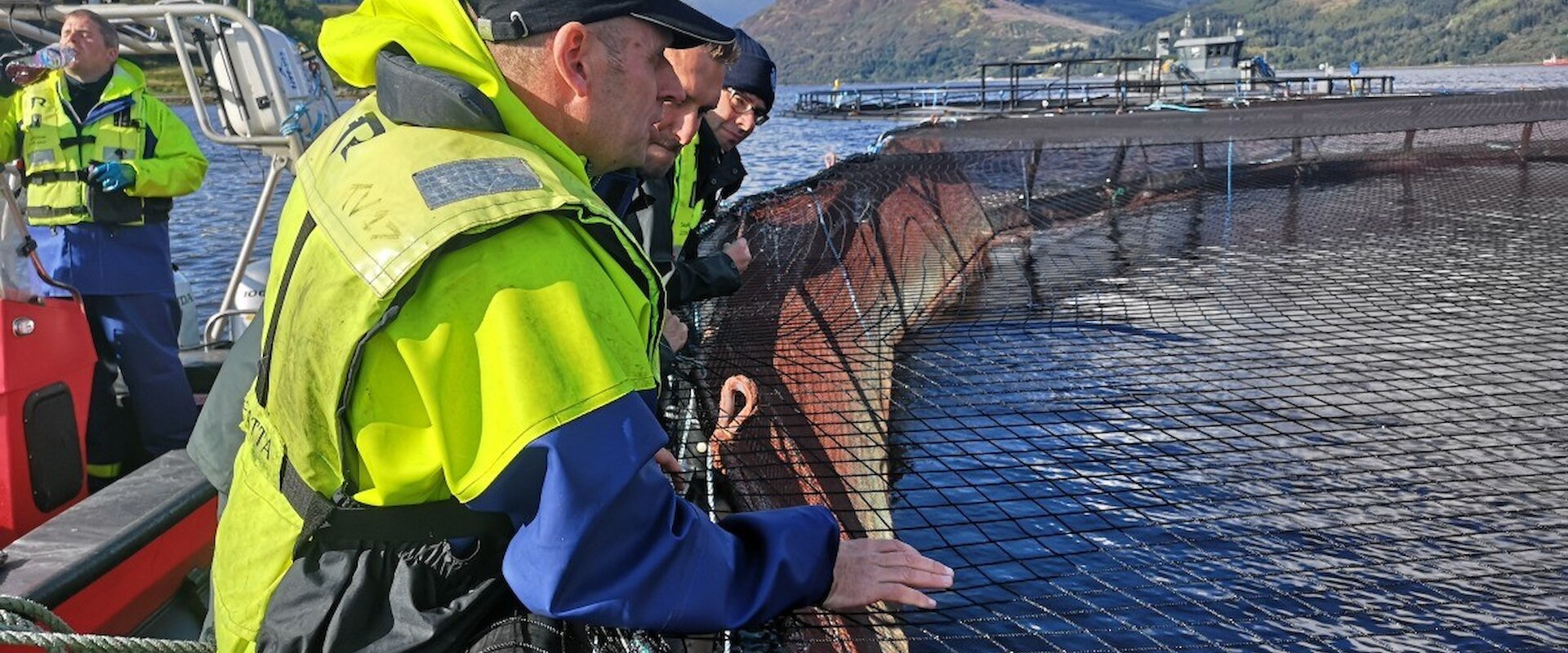A single attack can lead to hundreds of fish being killed or injured, and cumulatively these add up to hundreds of thousands of deaths a year. In 2018 alone, over half a million farmed salmon in Scotland died as a result of seal attacks, either directly from the physical attack or indirectly from stress.
This damage to fish is contrary to salmon farmers' obligations to protect fish welfare, so producers in Scotland are investing millions each year in innovative solutions for preventing seal attacks on salmon, while creating minimum impact on marine mammals (including seals themselves).

Acoustic devices have been used for some time, and the industry continues to fund research to refine and enhance this technology. Often, these devices are used in combination with a growing range of other solutions, determined on a site-by-site basis as part of each farm's Management Plan.
These other solutions include:
Anti-predator or seal-proof nets
Traditional nylon netting for fish pens is relatively flexible and seals can push their heads against it and grab or bite salmon that swim close by. Sometimes they pull their tails through the netting and eat them, or sometimes they take bites from the flanks of the fish.
To protect salmon against this, farmers across Scotland have been deploying tougher, more rigid netting manufactured from high density polyethylene (HDPE). Less pliable than nylon and sometimes threaded with steel wire, this offers greater resistance against seal attacks and discourages hunting around farms.
Another benefit of HDPE nets is that they are easier to clean in situ, bringing further fish welfare and environmental benefits.
Net tensioning
Reducing the 'give' in nets makes predation harder. Farmers sometimes use a system of weights or a circular sinker tube at the net base to increase net tension. With less extensibility or stretch in the net, seals cannot push their snouts into the pen to feed on the salmon.
Farmers have also trialled the use of double netting - using two different designs of net - to prevent incursions. While it can prove extremely effective in preventing seals from reaching the salmon a small number of drownings have been recorded in other countries when seals have become ensnared between netting layers.
Seal blinds
Since seal attacks often occur in or near the base of salmon pens, farmers sometimes use seal blinds - thicker material with finer mesh - at the lowest point of their nest. These prevent seals from seeing salmon in the pens.
Electric fish deterrents
These devices, designed to be placed at the base of a net, give a mild electric shock to predators if they bite a fish. Whilst not strong enough to cause harm to the seal, they can deter future visits.
Salmon farmers are working closely with many different stakeholders - including researchers, Marine Scotland, retailers, wildlife organisations, river fisheries and supply chain businesses - to develop new ways of managing predation.
Whilst approaching the issue from different perspectives, all share common goals of protecting the welfare of both salmon and Scotland's seals, while also minimising the impact of deterrent methods on other marine wildlife. These new technologies offer significant steps towards achieving that goal.

